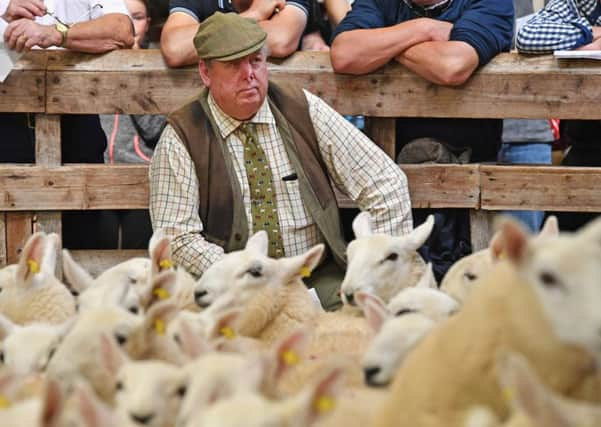Lamb prices still buoyant despite recent easing
This article contains affiliate links. We may earn a small commission on items purchased through this article, but that does not affect our editorial judgement.


However, he pointed out that the price per head may not be as high as that as some of the gain in price per kilogramme has been offset by lambs going for sale at slightly lighter weights.
“Scottish abattoir information suggests that carcase weights in July were 0.7kg lighter than last year, while across the UK as a whole lamb carcases were 0.4kg lighter,” said Ashworth.
Advertisement
Hide AdAdvertisement
Hide AdUnusually, producers are benefiting despite the volume of fresh lamb bought by consumers having fallen. Retail prices have only risen by between 8 and 10 per cent and this means producers are receiving more of the retail value of a lamb than they have for some time, according to Ashworth.
He thought the reduced consumer purchasing of lamb was more down to reduced availability rather than any other factor with throughput in Scottish abattoirs falling by more than 20 per cent in July.
Apart from availability of lamb, the other big factor supporting the rise in lamb price this year has been the weak Sterling exchange rate. This has made Scottish and UK lamb extremely competitive in the European market. But export sales are lower than they were 12 months ago.
On the wider front, he said: “Also influencing the wider European market is the slower arrival of prime lambs onto the Irish market and reduced production in New Zealand. Irish lamb slaughterings since May are running four per cent lower than last year and in recent weeks have been running more than seven per cent lower than last year.”
Traditionally, the availability or otherwise of lamb from New Zealand has had a major influence on the trade in the UK. With production in New Zealand being ten per cent lower than in June last year, this has helped trade to remain firm. Looking forward, Ashworth said there was a real prospect of a fall of more than three per cent in New Zealand lamb meat production through 2016 and into 2017.
Hedging his bets on the home market, he cautioned. “While clearly running lower than last year in both the UK and Ireland we do not know yet whether this reflects a smaller lamb crop or simply slow growth rates. The latter would result in a larger volume of lambs in the market during the peak selling period of September and October.
“A strong growth in lamb numbers over the next few weeks in both the UK and Ireland will have a downward impact on market prices, although the current QMS Scotch Lamb PGI campaign, which started this month, coupled with continued weakness of sterling and lower New Zealand supplies, will help to support the price.”
